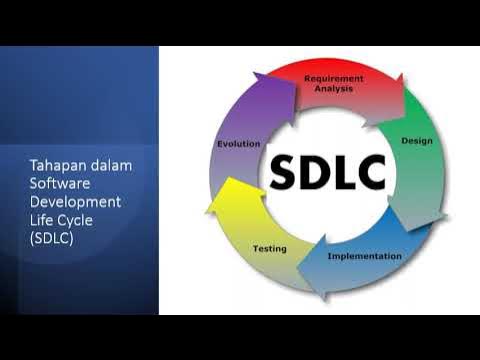Spring Boot Cache Annotations || Cache Providers || Where to set Caching Policy || Green Learner
Summary
TLDRThis video is a comprehensive guide on caching mechanisms in software development. It introduces the concept of caching, explains why it's essential, and delves into the specifics of cache annotations in Spring Boot. The tutorial covers enabling caching, cacheable methods, conditional caching, and eviction policies. It also discusses different cache providers like JDK concurrent maps, EhCache, and Caffeine, and how to configure TTL and eviction policies. The video promises a practical demonstration in the next episode, encouraging viewers to follow along for a deeper understanding.
Takeaways
- 😀 Caching is used to store information close to the application to improve performance and reduce load times.
- 🔑 The process of caching involves enabling caching, storing information, updating the cache when the actual value changes, and evicting or clearing the cache when it's no longer needed.
- 📚 Spring Framework provides annotations to manage caching, including @EnableCaching, @Cacheable, @CachePut, and @CacheEvict.
- 🔍 @Cacheable is used to mark methods whose results should be stored in the cache, with the ability to specify cache names and conditions for caching.
- 🔄 @CachePut is used to update the cache with the new result of a method call, executing the method first and then updating the cache.
- 🚫 @CacheEvict is used to remove entries from the cache, either specific entries or clearing the entire cache based on conditions.
- 🔒 The @Cacheable annotation can include a 'condition' to control when the cache should be used, such as checking the length of a string.
- 🔐 The 'synchronized' attribute in @Cacheable can be set to 'true' to prevent multiple simultaneous executions of the same method, avoiding conflicts.
- 👥 Spring Boot allows for multiple cache annotations to be used on the same method, but it's important to understand the different behaviors they exhibit.
- 🛠 Different cache providers, such as JDK Concurrent Maps, EhCache, and Caffeine, can be used with Spring Boot, each with its own configuration for eviction policies and TTL.
- 📝 The eviction policy and TTL settings are configured at the cache provider level, not by the Spring Framework's caching abstraction layer.
Q & A
What is the main topic of the video series?
-The main topic of the video series is about caching, specifically how to implement and work with different caching annotations and strategies in a software application.
Why is caching important in application development?
-Caching is important because it allows an application to store information close to the point of use, reducing the need to repeatedly fetch the same data, which can improve performance and reduce load times.
What are the four basic operations that can be performed on a cache according to the script?
-The four basic operations are enabling caching, storing information into the cache, updating the cache when the actual value changes, and evicting or removing items from the cache when they are no longer needed.
What is the purpose of the '@EnableCaching' annotation in the context of the video?
-The '@EnableCaching' annotation is used to enable caching capabilities in an application, making it ready to store and retrieve data from a cache.
Can you explain the 'cacheable' annotation and its role in caching?
-The 'cacheable' annotation is used on methods that are intended to be cached. It specifies that the result of the method should be stored in the cache, and subsequent calls with the same parameters can retrieve the result from the cache instead of re-executing the method.
What does the 'key' attribute in the 'cacheable' annotation signify?
-The 'key' attribute in the 'cacheable' annotation defines the cache key that will be used to store and retrieve the cached data. It can be a simple string or a SpEL (Spring Expression Language) expression that evaluates to the key value.
How can conditions be applied to caching using the 'cacheable' annotation?
-Conditions can be applied to caching using the 'condition' attribute in the 'cacheable' annotation. This allows for caching to occur only when certain conditions are met, such as a string length being below a certain threshold.
What is the difference between 'cacheable' and 'cachePut' annotations?
-The 'cacheable' annotation is used to cache the result of a method call only if the data is not already in the cache, whereas 'cachePut' is used to update the cache with the result of a method call regardless of whether the data is already cached or not.
What is the 'cacheEvict' annotation used for?
-The 'cacheEvict' annotation is used to remove entries from the cache. It can be used to clear all entries in a cache or specific entries based on the defined key.
What does the 'cacheConfig' annotation do?
-The 'cacheConfig' annotation is used at the class level to define common caching configurations that should be applied to all methods within that class, avoiding the need to specify the same caching information repeatedly on individual methods.
What are some of the cache providers mentioned in the script?
-The script mentions JDK concurrent Maps, Ehcache, and Caffeine as some of the cache providers that can be used with the caching abstraction provided by Spring Boot.
How are eviction policies like TTL (Time To Live) set in Spring Boot caching?
-Eviction policies such as TTL are set at the cache provider level. Spring Boot provides an abstraction layer for caching, but the specific eviction policies must be configured directly in the chosen cache provider's configuration.
Outlines

このセクションは有料ユーザー限定です。 アクセスするには、アップグレードをお願いします。
今すぐアップグレードMindmap

このセクションは有料ユーザー限定です。 アクセスするには、アップグレードをお願いします。
今すぐアップグレードKeywords

このセクションは有料ユーザー限定です。 アクセスするには、アップグレードをお願いします。
今すぐアップグレードHighlights

このセクションは有料ユーザー限定です。 アクセスするには、アップグレードをお願いします。
今すぐアップグレードTranscripts

このセクションは有料ユーザー限定です。 アクセスするには、アップグレードをお願いします。
今すぐアップグレード関連動画をさらに表示

Django Mock Interview | Interview Questions for Senior Django Developers

Books every software engineer should read in 2024.

2021 Cloudflare: Basic Pages Rules and Cache Levels, Standard and "Cache Everything"

Make Your API Requests INSANELY Fast in .NET

Como usar caching no front-end para melhorar a performance do seu site? | #PR

Pengantar Rekayasa Perangkat Lunak (Software Engineering)
5.0 / 5 (0 votes)
